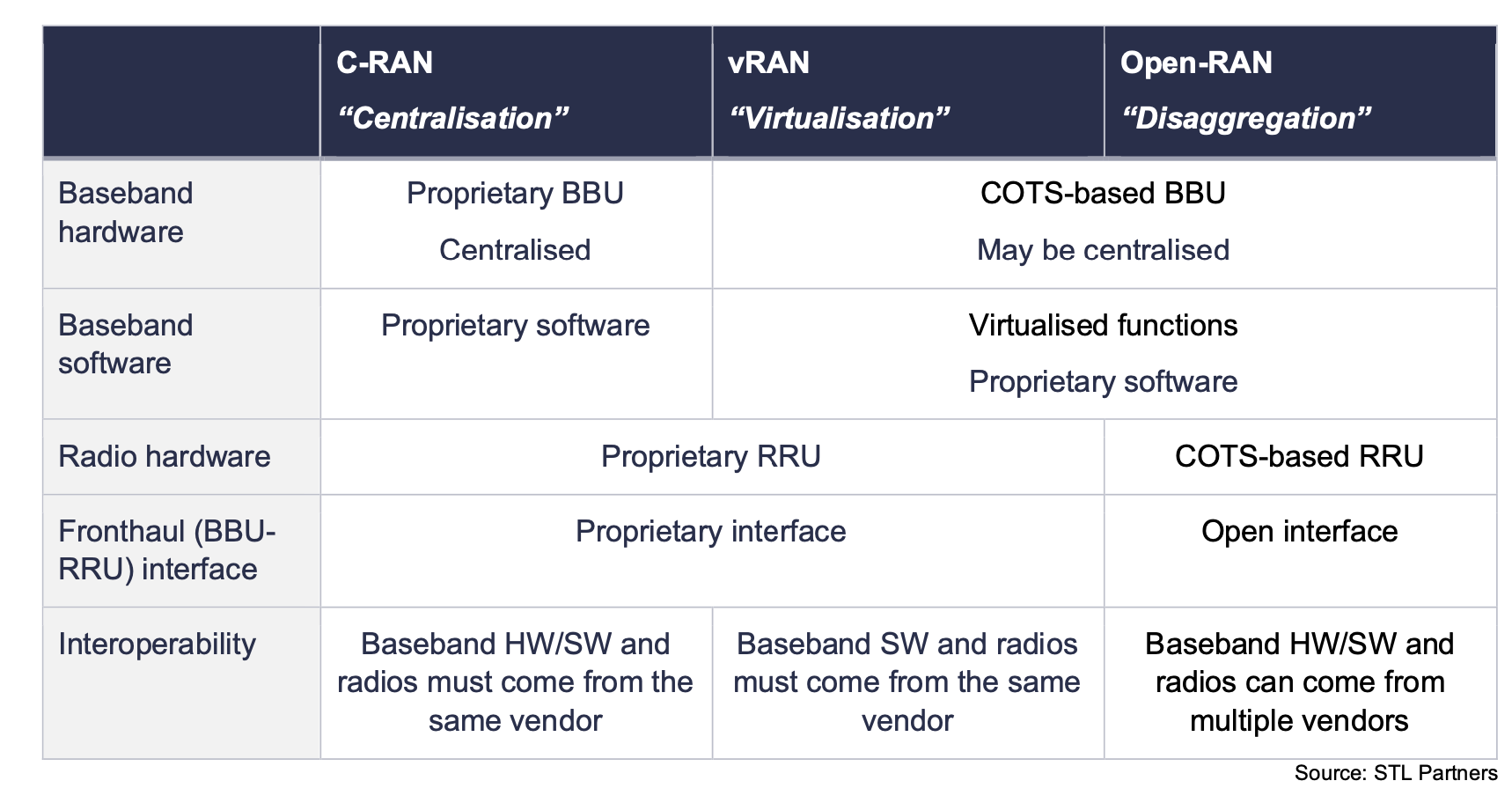
What is open RAN and where are we at in 2021?
As industry projections suggest that proprietary vRAN provided by traditional vendors will continue to dominate the industry in the near term, this article highlights the key open RAN developments in 2020 and gives an overview of the current state of the industry on deploying open RAN.
Open RAN enthusiasm hit an inflection point in 2020…
“Open RAN” – a catchall term for various technologies that involve disaggregation of hardware and software radio access network (RAN) components – can be characterised by three key pillars: centralisation (C-RAN), virtualisation (vRAN), and disaggregation (open-RAN)
In a year that saw the ramp-up of 5G commercial rollouts and mandates to rip and replace 5G equipment from certain vendors, open RAN has gained a lot of momentum in the telecoms industry. Operators – incumbents and challengers alike – have shown interest in starting field trials, pilots, and even commercial deployments of open RAN. Vodafone has committed to deploying open RAN in at least 2,600 rural locations in the UK by 2027, and announced that it would open a number of R&D labs across Europe. Meanwhile, Japanese new-entrant Rakuten Mobile ratified its alignment to the O-RAN Alliance, having deployed the world’s first cloud-native 5G network with a multi-vendor approach. As much as a third of the overall spend on RAN components and services by 2026 – around US$11 billion – is estimated by Appledore to be investment in open RAN
Figure 1: Three pillars of open RAN

…but most deployments are far from the open RAN vision
The hype behind open RAN has largely circled around the promise of the third pillar – “disaggregation” or “open-RAN” – this is the ultimate ambition for operators, but open-RAN deployments are still nascent, meaning that its full benefits may not be realised until 6G. For many operators, vRAN will serve as a stepping stone in the near term. Analyst predictions even signal that single-vendor vRAN solutions will prevail: 80% of the projected US$11b budget for open RAN is expected to go to traditional incumbent vendors who will offer pre-integrated, proprietary vRAN solutions that contain some internal open interfaces.
How should operators deploy open RAN?
To find out more about Open RAN and different deployment roadmaps for telcos, check out STL Partner’s Open RAN: What should telcos do? report.
Telco Network Energy Efficiency: The Role of the RAN in Future Energy Consumption
With sustainability increasingly front of mind for stakeholders, operators are looking to the RAN for energy saving solutions to support their journey to net zero. This article details both the need for such solutions and what is on offer in the current marketplace.
1&1 Drillisch AG: forging ahead with Open RAN
The greenfield German telecoms operator 1&1 Drillisch AG announced plans to speed up the deployment of its own Open RAN technology, aiming to provide at least 1,000 5G base stations by 2022. But it will probably take until the beginning of 2023 before the network can go live and existing customers can be migrated to its own infrastructure.
What is the RIC, and why should CSPs care?
As CSPs move towards O-RAN, the RAN Intelligent Controller (RIC) will be a key component in enabling transformation. In this article we explore what the RIC is, how far along the industry is with adoption, and how the RIC will benefit CSPs.




